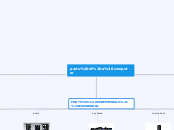parts of a computer
CORE
Motherboard

a printed circuit board containing the principal components of a computer or other device, with connectors into which other circuit boards can be slotted.
Drives

A physical drive is a term for the hard disk drive unit or hardware within a computer, laptop or server.
Cooling Devices

A graphics card is a mechanical device built into a computer that enables the user to see graphics and video faster and clearer.
CPU

Sometimes referred to simply as the central processor, but more commonly called processor, the CPU is the brains of the computer where most calculations take place.
RAM

is an acronym for random access memory, a type of computer memory that can be accessed randomly; that is, any byte of memory can be accessed without touching the preceding bytes.
PORTS, PEREPHERIALS, EXPANSIONs
USB

is a common interface that enables communication between devices and a host controller such as a personal computer (PC).
Graphics Card
an accessory for laptop computers that helps reduce their operating temperature, which is normally used when the laptop is unable to sufficiently cool itself.
Video

the recording, reproducing, or broadcasting of moving visual images.
a recording of moving visual images made digitally or on videotape.
Ethernet

a system for connecting a number of computer systems to form a local area network, with protocols to control the passing of information and to avoid simultaneous transmission by two or more systems.
Audio

Audio is sound within the acoustic range available to humans. An audio frequency
keyborad

a panel of keys that operate a computer or typewriter.
a set of keys on a piano or similar musical instrument.
microphone

an instrument for converting sound waves into electrical energy variations, which may then be amplified, transmitted, or recorded.
webcam

a video camera that inputs to a computer connected to the Internet, so that its images can be viewed by Internet users.
headphones

a pair of earphones typically joined by a band placed over the head, for listening to audio signals such as music or speech.
Monitor

an instrument or device used for observing, checking, or keeping a continuous record of a process or quantity.
Printer

a person whose job or business is commercial printing.
a machine for printing text or pictures onto paper, especially one linked to a computer.
OPERATING SYSTEM
Process Management

Process Management refers to aligning processes with an organization’s strategic goals, designing and implementing process architectures, establishing process measurement systems that align with organizational goals, and educating and organizing managers so that they will manage processes effectively.
Memory Management
Memory management is the process of controlling and coordinating computer memory, assigning portions called blocks to various running programs to optimize overall system performance.
Device Management

Definition of: device management Within the computer, activating and controlling the peripheral devices. In a desktop computer, the operating system interacts with the device drivers for peripheral control.
Storage Management

Storage management usually refers to the management of Computer data storage, which includes memory management. It can also refer to specific methods or products for storage management, such as the following.
User Interface

the means by which the user and a computer system interact, in particular the use of input devices and software.
